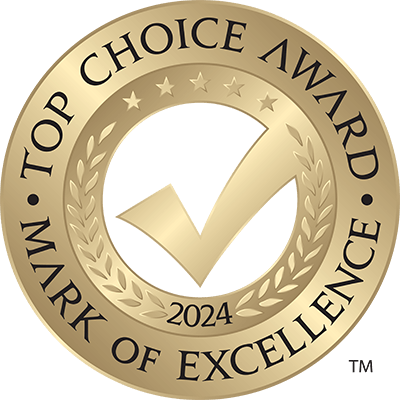What is Precision Refractive Cataract Surgery?
Precision Refractive Cataract Surgery is the most exciting advancement in the field of cataract surgery since phacoemulsification was introduced over 50 years ago. It combines the extraction of a cataract with advanced diagnostic technologies, and premium intraocular lenses. The goal of this procedure is to reduce or eliminate the need for glasses or contacts post-operatively.
Intraocular Lens Options
Monofocal IOL
- Provides high quality vision at one focal point – usually distance.
- May be combined with monovision.
Monofocal+ IOL
- Provides high quality vision at distance and intermediate, can be combined with mini-monovision.
- Reduced dependency on reading glasses.
Continuous Range of Vision / Trifocal IOL
- Provides the ability to focus at near, intermediate, and far.
- Dependence on glasses is reduced significantly.
Toric IOL (Astigmatism)
- A toric IOL provides the added benefit of correcting pre-existing astigmatism.
- All IOLs have a toric lens option to correct for astigmatism.
Light Adjustable Lens (LAL)
- Delivers superior distance and near vision outcomes.
- Your vision can be optimized after surgery through a series of light treatments.
What to Expect
The pre-operative considerations for Refractive Cataract Surgery differ from a laser vision correction procedure because every lens must be ordered well in advance. Because Refractive Cataract Surgery is an intraocular procedure, a pre-operative measurement appointment is required. All of the instructions will be shared with you by your Refractive Consultant and the doctor during your comprehensive consultation. Some of these instructions / pre-operative considerations might include:
- Switching to glasses and refraining from contact lens wear for 1-8 weeks (depending on the type of contact lenses you wear)
- A retinal consultation will be arranged prior to your procedure to confirm the health of the back of your eye (the retina)
- You may require routine medical tests (if deemed necessary, a requisition will be provided)
- Having your medicated eye drops prescription filled
- Following the fasting instructions in preparation for IV sedation
- Arranging transportation to and from Herzig Eye Institute for your procedure day
The procedure is quick and painless. Topical anesthetic numbing drops and local anesthesia with IV sedation (fasting is required) will be administered. The surgeon will then gently insert the Intraocular Lens (IOL) and no stitches will be required.
Directly following the procedure, you will be examined by the surgeon. After your examination, it is recommended you go home and rest as you may be experiencing blurry vision, some discomfort, and sensitivity to light. Discomfort is normal during this time.
A medicated drop regimen needs to be followed after the procedure. The drop schedule will be reviewed with you and any questions you have will be answered. Other directions will be provided by your Refractive Consultant, the nurses, and the surgeon on the day of your procedure.
It is critical you are seen for all requested post-operative appointments at either Herzig Eye Institute or with your optometrist.
For more information about Cataract Surgery, please download The Complete Guide to Cataract Solution.
What’s the purpose of a lifestyle questionnaire for patients over the age of 40?
What’s the best treatment for patients wanting to get rid of their reading glasses?
Is it true a patient can get rid of reading glasses if it’s the only time they’ve worn glasses?
Looking for more information about cataract surgery?
Please download The Complete Guide to Cataract Solutions
Precision Refractive Cataract Surgery FAQs
Laser-Assisted Cataract Surgery in Toronto & Ottawa
With the assistance of the Catalys® femtosecond laser, our surgeons are able to perform a highly customized procedure, with significant benefits over traditional techniques.
What is the CATALYS® and How Does it Work?
The Catalys® laser combines a state-of-the-art femtosecond laser and advanced 3D Optical Coherence Tomography (OCT) imaging to complete many of the critical steps in a cataract procedure. Many of these steps were previously performed manually with handheld instruments.
The laser is utilized for corneal incisions, astigmatic correction, the central opening in the anterior capsule, and fragmentation of the cataract. Using a laser to complete these steps increases precision, accuracy, and safety during cataract surgery.
Every eye has a unique size and shape. Catalys®’ advanced 3D imaging technology builds a real time map of your eye and tailors your treatment to the map. This enables our surgeons to create a customized treatment plan unique to your eyes.
Benefits of Laser-Assisted Cataract Surgery
- The laser creates a precise and unique incision guided by software. This precision allows the incision to heal better.
- This procedure is extremely gentle on the eye. The laser is used to fragment the cataract into microscopic pieces resulting in 95% less ultrasound energy being necessary to complete the procedure.
- The laser can correct astigmatism more accurately, especially when combined with a toric IOL.
- The circular opening made in the patient’s lens with the laser is 10x more accurate than a manual opening. This has the potential to more accurately predict the IOL position in the eye, leading to a more predictable refractive result.
- Using the laser for this step also makes the operation safer for more complex cases.
- Faster recovery time.
- With the use of multifocal intraocular lenses (IOLs), over 90% of patients are completely glasses-free following Precision Refractive Cataract Surgery.
Through the Eyes of a Patient
To learn more about the Herzig Eye Institute experience, watch these videos through the eyes of patients who underwent their own Refractive Cataract procedures.


